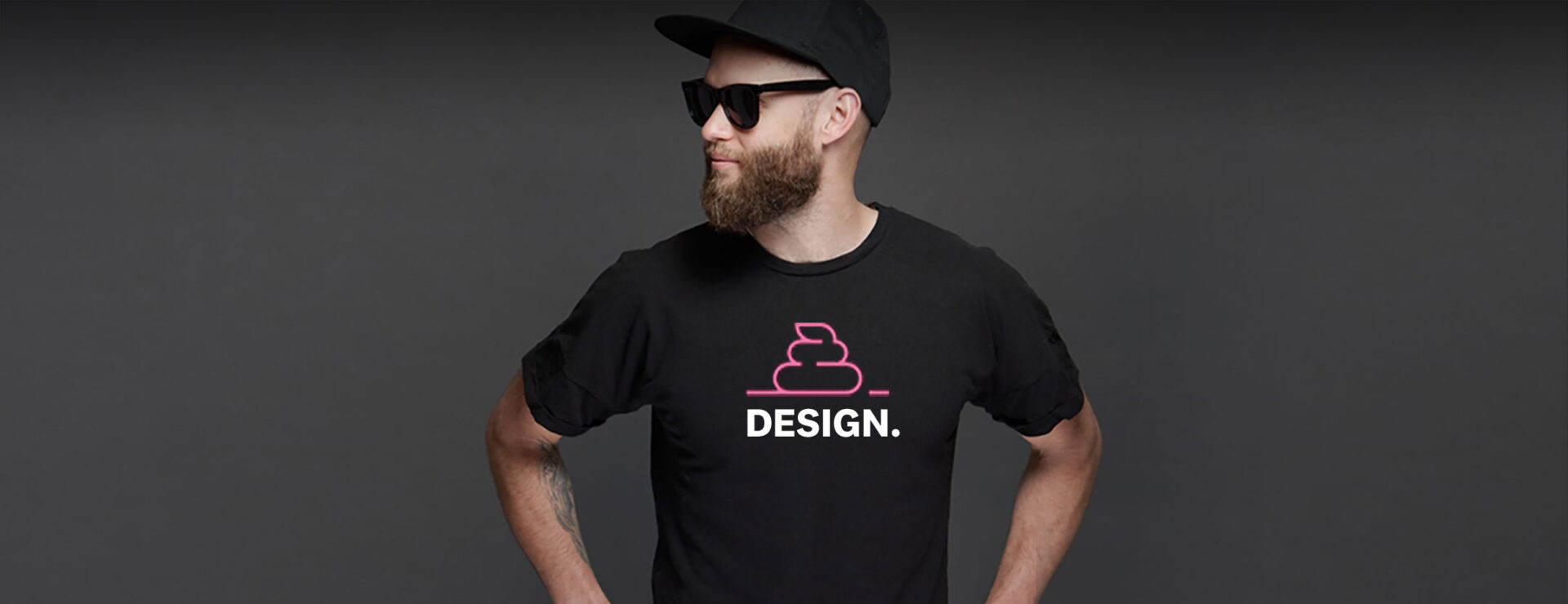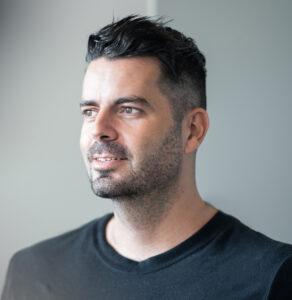
Article
The 6 Identifiable Traits of a Wayward Designer
As the design industry evolves, many bad habits and average traits are infiltrating the modern designer's toolkit. Learn the red flag personas to look for when hiring a designer.
Starting out as a design professional is no easy task. Not today, not ever. The quality of tools that design professionals have access to now makes it even more difficult to see the wood from the trees when assessing design talent.
I’m a stickler for cutting through the B.S. when reviewing design work to understand the thoughts and design rationale behind each and every decision. I must admit I have an unhealthy habit of allowing my blood to boil when I see things being done poorly or with a lack of understanding of what good design is.
I wish I could say I never committed any heinous design crimes during my infant years as a designer, but that would be B.S. itself. A bit of my own retrospective analysis will always unearth some cringe-worthy moments that I’m not overly proud of as I took my first steps into design professionally. The key is to acknowledge erroneous ways and ensure they’re rectified before they manifest over again.
The problem now is that I see trends being established within the modern-day designer that show no signs of waning or self-correction. So much so, that I couldn’t resist writing my take on the different types of designers becoming common archetypes of today’s quintessentially average design professional. These are the six designer personas that we all need to avoid.
1. The Solution Shoveler
This type of designer designs the solution then finds the problem. Strategy who? Research when? An informed idea where? The Solution Shoveler is so focused on finding an answer that they completely lose their ability to understand the question in the first place. While enthusiasm and momentum in a project are key, they shouldn’t be used as an excuse to hurdle important steps in the product development process.
You might be working with a Solution Shoveler if:
- before a question is even asked, or a conversation had, a polished final solution is waved in front of the team
- there are 100 sketches on your desk prior to even unpacking the brief
Often simple eagerness and a huge desire to impress can get in the way and next thing you know, you’re knee-deep in sketches before you’ve even had a chance to blink or fully digest what you’re trying to achieve. Don’t spend your time trying to wedge square pegs in round holes. Instead, constantly ask yourself what am I trying to accomplish and how can I best inform the solution.
Tip: Always ensure clarity on the problems that need solving and the design constraints that have to be worked within before even contemplating illustrating the solution.
2. The Data Duplicator
The Data Duplicator knows it’s much easier to endlessly collect data than it is to actually formulate meaningful outcomes, so they actively avoid the latter. They attempt to shield themselves from critique by ensuring that the quantity of what they do totally obscures the quality of their work.
You might be dealing with a Data Duplicator if:
- you’ve got a sea of colored post-its artfully arranged on a wall, but zero actionable insights
- one top to bottom scroll through their findings document gives you carpal tunnel
- they insist on regurgitating information vs. actually formulating a framework that can point to a market win
While their nutty professor ways can seem innocent and perhaps even endearing, this type of designer can actually be a huge threat to your project’s success (and budget!). They have their mind firmly set on rolling out hundreds of slides filled with slick infographics and tons of data points just to prove that they have in fact done lots of discovery, not revealing meaningful insights and actionable outcomes (which was the whole point of your discovery phase in the first place).
Transitioning from data collection and synthesis to actionable design opportunities is imperative in a design process, and it must be done efficiently. Time is money! Working with a Data Duplicator is a recipe for wasted time, squandered resources, and a fresh crop of gray hairs, so take my word for it and steer clear.
Tip: In order to distinguish between an appropriately thorough researcher and a Data Duplicator, ask how their plethora of findings will inform the end product and more importantly how they will translate to customer and business value.
3. The Pretentious Pinterester
If your mood board isn’t impeccably littered with Apple products and Dieter Rams quotes, be prepared for a dirty look from the Pretentious Pinterester. This designer prioritizes the crafting of inspirational mood boards over all else. It’s imperative for this designer to have the flawless gridding of their visual composition supersede anything else on show. It’s also more important for this persona that the designs they generate prioritize their eventual appearance on a Lemanoosh page instead of daring to serve a critical user need.
You might be dealing with a Pretentious Pinterester if:
- their portfolios show more inspiration than they do execution
- their designs are tailored towards an unrealistic design philosophy vs. being designed for the environment that they need to serve
This is not to say that I’ve enacted a mood board moratorium on the M3 Team. We actually do spend a decent amount of time creating them for our projects. The important thing though is that every board we put together has an explicit purpose. It’s an opportunity to articulate visual narratives of where the future of a product could lie. They not only inspire us as designers, but they also help our clients visualize and respond to their product and brand attributes. However, they are not THE point of what we do.
A mood board, physical or digital, should merely be a jumping-off point for a design project. It’s not the project itself and it’s not a set of rules to live by while executing the project either. Too much time spent on the precise gridding and organization of a Pinterest page is simply time wasted.
Tip: If you stumble upon a design candidate with a suspiciously large emphasis on their Pinterest profile, drill down to their core competency by asking for examples of how they have put their inspirational backdrop to use on project work.
4. The 2D Deceiver
Ah, the 2-dimensional wizard. Nothing screams great design more than throwing some cool-looking 2D orthographic views to an engineer or a vendor and say go make it! Designers don’t need to understand the 3D form, as long as the 2D sketch looks amazing, right? WRONG! Sure, use your 2D skills to create a vision, but a key duty of any good designer is to then translate the 2D vision into a 3-dimensional form. There’s too much at stake, and too much evaluation and interpretation still required to neglect this step.
Tip: Never leave anything to chance when designing the overall product or experience. The more thorough and defined your concept is, the stronger the likelihood that it lives up to its promise when launched.
5. The Keyshot Kidder
The Keyshot Kidder is a close relative of the 2D Deceiver, except they live a little too firmly in the 3rd dimension. They can whip up a CAD model and a photorealistic render in minutes, so why would they even bother doing anything else?
You might be dealing with a Keyshot Kidder if:
- their portfolio is full of really impressive renders of products that don’t actually exist (exceptions given to students and recent grads with no on-the-job experience)
- their color, material and finish (CMF) strategy looks impeccable in Keyshot, but can never be achieved in reality
While process is not everything, it is important. This type of designer consistently gives in to the temptation to jump the gun on utilizing Keyshot (or any other software like it) before the process has hardly even begun. We spend time on the strategy phase for a reason, it reveals to us insights that will not only inform that concept rendering they’re so obsessed with but will also guide the rest of the product development process.
So many designers (and design firms) forget that the delivery of a final concept rendering is not the finish line. In reality, you’re maybe only a quarter of the way done. There’s a LOT that has to happen to turn that really slick Keyshot rendering into an actual product. Software like this has a great purpose within the design process, but don’t let it distract from the actual problem(s) you are trying to solve.
Tip: To smoke out the Keyshot kidder, ask about their experience in bringing concept renderings to life through the development process. This will illustrate whether or not their design abilities (as impressive as they may be) are firmly grounded in reality. Any designer that is not designing for real life, is not a designer that you want to be working with. Period.
6. The Engineer’s Assistant
The Engineer’s Assistant is a designer that simply plays second fiddle to the engineering team. In their head, engineers wrote the product development playbook, so why would you ever push back? If an engineer says something can’t be done then surely it can’t.
You might be mixed up with an Engineer’s Assistant if:
- any time their design’s are challenged they quickly nod and scuttle back to their desk
- they are overly willing to compromise design intent and details to avoid discussion, justification and confrontation
And yes! Sometimes designers do create concepts that can’t be realistically achieved–I’m looking at you Keyshot Kidder. But oftentimes, an insistence on trying from a design team can push an engineering team to achieve something they believed impossible. Each team has its own unique skill set and expertise, but their relationship should be complementary, not oppositional.
Tip: Ask about their conflict resolution experience with engineering teams. If they can’t recall a scenario, they’re probably an Engineer’s Assistant. If they can, ask for details on how they went about handling it. Design and engineering partners SHOULD have a bit of healthy tension with each other, it’s what keeps us both innovative but realistic.
Re-focusing a wayward designer
As cynical and grumpy as I might sound, I’m a huge advocate of thorough research or Pinterest or KeyShot or working in-step with engineers, but they have to be used at the right time within the process. In the right context, all of the core competencies that each of these designers possesses are good and have their place. But the common denominator creating problems for all of these personas is a lack of focus on what is critically important in the design process at any given time to enable great products to be created.
However, none of these designers are perpetually doomed. Bad habits can be trained out of a designer (especially a young one, I’ve been there!) in the right environment and with the right leadership. And good process can be trained in.
Leveraging the right tools and the right skillsets at the appropriate time, while always keeping your eye on the prize is imperative if our clients are going to get the full ROI impact from good design that they deserve.





